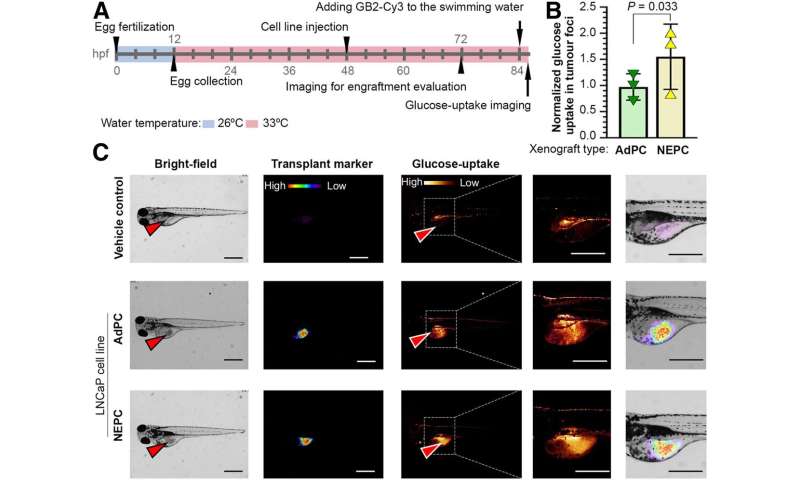
Scientists have uncovered the genomic signature to explain why 18F-FDG imaging performs better than PSMA-targeted imaging for prostate cancer patients with low or no expression of the prostate-specific membrane antigen (PSMA). In a study published in the Journal of Nuclear Medicine, researchers determined that a neuroendocrine gene signature (common in prostate cancers with low PSMA expression) associates with a distinct differential expression of glucose transporters and hexokinase proteins, which allows for a more favorable uptake of 18F-FDG than PSMA-targeted radioligands. Additionally, the study demonstrated that zebrafish xenograft tumor models are an accurate and efficient preclinical method for monitoring nonradioactive glucose uptake.
“While PSMA-targeted molecular imaging and therapy have transformed the landscape of prostate cancer management, a small minority of prostate cancers with neuroendocrine prostate cancer may not effectively benefit from PSMA-targeted therapy,” said Gi Jeong Cheon, MD, Ph.D., chairman of the department of nuclear medicine at Seoul national University College of Medicine in Seoul, Korea. “Previous clinical reports indicate that prostate cancers with a phenotype related to neuroendocrine tumors can be more responsive to imaging with 18F-FDG than PSMA-targeting radioligands. Our research sought to provide a genomic rationalization for this 18F-FDG avidity.”
Researchers utilized data-mining approaches, cell lines and patient-derived xenograph models to study the expression levels of glucose-associated genes, including 14 members of the SLC2A family (encoding glucose transporter proteins), four members of the hexokinase family (genes HK1-HK3 and GCK) and PSMA (FOLH1 gene) after androgen-directed therapy and in correlation with neuroendocrine hallmarks. A neuroendocrine-like subset was characterized among a group of primary and metastatic prostate cancer samples with no neuroendocrine histopathology. Glucose uptake was measured in a neuroendocrine-induced in vitro model and a zebrafish model by nonradioactive imaging of glucose uptake using a fluorescent glucose bioprobe.
https://youtube.com/watch?v=94Sxq34BLXU%3Fcolor%3Dwhite
Upon statistical analysis, researchers found elevated expression of GCK and decreased expression of SLC2A12, which demonstrates that a neuroendocrine gene signature associates with differential expression glucose transporters and hexokinase proteins. In accordance with this expression, the suppression of PSMA in neuroendocrine prostate cancer is associated with elevated glucose uptake.
“Early detection of neuroendocrine prostate cancer development is critical for patients as these tumors do not respond to standard of care and require alternate therapies,” noted Cheon. “Our data demonstrate that these tumors express genes that are in favor of higher uptake of glucose, providing genomic data to support that 18F-FDG positron emission tomography is an attractive imaging tool for these patients.”
In addition to studying the expression levels of glucose uptake-associate genes, researchers sought to determine the feasibility of using nonradioactive in vivo imaging of glucose uptake in a zebrafish model. Using a fluorescent glucose bioprobe to image embryo-larval zebrafish, researchers demonstrated that zebrafish xenograft tumor models are a rapid and cost-effective method to monitor nonradioactive glucose uptake.
Source: Read Full Article
